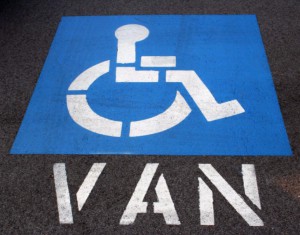Looking to buy a disability or handicapped accessible van? Before shopping at Classic Vans, study up on this list of important key terms you should know.
If you or a loved one are searching for a mobility van, it can appear to be an overwhelming task. There are so many different types, accessories, functions and equipment. Wheelchair vans can be very basic, or come equipped with more bells and whistles than you ever imagined!
Navigating through all of the terminology and language is your first step in finding a custom van to suit your needs. Those seeking a mobility van will have a variety of equipment requirements based on their disability. Discussing the functions your automobile will need to have with a physical therapist, social worker or doctor can be a good place to start.
Below is a list of terms you may commonly run into when looking at mobility and wheelchair vans.
Adaptive: This refers to a vehicle being changed or modified in order to serve a new or different purpose. Vehicles that are adapted for wheelchair use may have a raised floor, widened doors or ramps that have been installed.
Conversion: Conversion is a commonly used term for a van or vehicle that has been modified by a second company or NMEDA manufacturer. Installing adaptive and accessible equipment qualifies the stock vehicle to be a conversion.
Full-sized vans: Those seeking additional space have larger families or multiple passengers using wheelchairs will find a full-sized van may be a better option than a standard minivan.
Hand controls: Those with arthritis, progressive muscle weakness, and the elderly may be interested in finding a mobility van with hand-controls. The hand-controls can help compensate for inhibited leg and arm strength. There are a variety of hand control options. Here are some of the most common:
- Push/pull controls: The control must be pushed to brake, and pulled or held to accelerate.
- Push/right angle controls: These are popular and less fatiguing than pull controls. Pushing the control forward will brake. Pull down to the thigh and a slightly towards the torso to accelerate.
- Push/twist controls: These are similar to those of a motorcycle. Twisting the handle will accelerate and the push of the hand control lever will brake.
- Push/rock controls: Push and rock controls are almost like slot machines. The driver will securely hold onto the handle. Rock back to accelerate and forward to brake.
Kneeling: The van actually “kneels” by lowering itself closer to the ground for easy entry and exit. This kneeling affect is created by air suspension. Finding a van that is easy to get your wheelchair in and out of is extremely important.
Lifts: Lifts are used to raise the wheelchair up and into the vehicle. Lifts can come with all sorts of features and control mechanisms. The automation of a lift makes it more expensive than a ramp. Below is a list of some of the features lifts can come with. Depending on your needs, a lift may be a better alternative than a ramp entry.
- Roll stops can be automatic or electric. These roll stops ensure the wheelchair remains in place during vehicle operation.
- Bridging mechanisms allow users to safely board the vehicle from inclines or sidewalks.
- Hand held, on-lift and remote controls assist with lift operations.
- In the case of power failure, lifts often have back up manual pump systems so you can continue to enter/exit your vehicle.
Minivans: Minivans make fantastic wheelchair accessible vehicles, particularly if the primary function of your car is to transport someone with a disability. Wheelchair accessible minivans have plenty of room, offer economical gas mileage and are easy to drive/park.
- Side-entry minivan: These are typically used for people in wheelchairs who plan to be the primary driver.
- Rear-entry vehicles: These are typically used for a person in a wheelchair with a caregiver/driver.
Ramps: In-floor and fold-out ramps are simply an incline connecting the van to the ground, providing an entry point for the wheelchair. They are fairly basic and much less expensive than lifts. They are also portable. Below are descriptions of several different types of ramps:
- Basic ramps: Light in weight and not mechanical. They are easy to fold up, and take up minimal space. A driver, caregiver or attendant can easily extend them for the wheelchair user. Many people favor these ramps because they rarely need expensive maintenance.
- Chanel or track wheelchair ramps: These ramps provide channels for each side of a wheelchair. They can hold up to 600 pounds. Bumpers on each side of the ramp keep the wheelchair on track.
- Platform access ramps: Platform access ramps are essentially heavier duty ramps. They can hold larger weight than more basic ramps.
- Roll-up ramps: Roll-up ramps can be easily stored in a bag and fit in a trunk or under a seat.
Steering aids: These are specifically designed for quadriplegics. Steering aids allow the driver to use minimal effort for steering. Here are several types of steering aids.
- Foot steering controls: Foot steering controls transfer the hand control to foot operation.
- Steering column extensions: Steering column extensions bring the steering wheel closer to the wheelchair driver. They also provide extra legroom.
- Low-effort and Zero-effort steering: Low and zero effort steering reduce the amount of strength needed for the driver to command the vehicle.
- Steering forks: These are designed for people with a lowered ability to grip the steering wheel.
Keep this list of key terms handy next time you are browsing for a new or used mobility van. There are so many features and specific amenities available. Making sure you know exactly what you need, and what you don’t, can save you lots of money and headaches!
Continue reading for more advice on finding the perfect mobility van for your needs.
